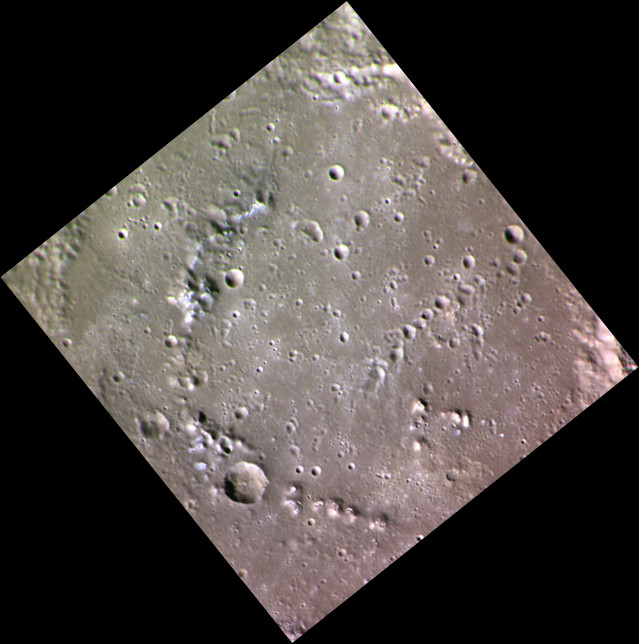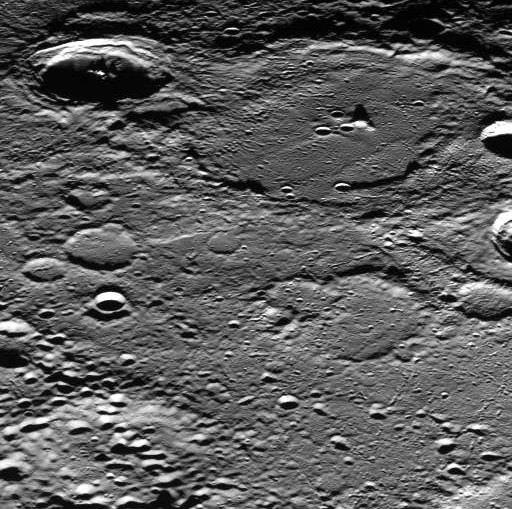|
Kōshō (crater)
Kōshō is a crater on Mercury. Its name was adopted by the International Astronomical Union in 1985. Kōshō is named for the Japanese sculptor Kōshō, who lived in the 13th century CE. There are bright patches on the central peak of Kōshō, which may be hollows. Kōshō is on the east margin of Suisei Planitia. To the south is the large crater Strindberg, to the east is Ahmad Baba, and to the north is Turgenev Ivan Sergeyevich Turgenev (; rus, links=no, Ива́н Серге́евич Турге́невIn Turgenev's day, his name was written ., p=ɪˈvan sʲɪrˈɡʲe(j)ɪvʲɪtɕ tʊrˈɡʲenʲɪf; 9 November 1818 – 3 September 1883 ( Old Style da .... References Impact craters on Mercury {{Mercury-planet-stub ... [...More Info...] [...Related Items...] OR: [Wikipedia] [Google] [Baidu] |
MESSENGER
''MESSENGER'' was a NASA robotic space probe that orbited the planet Mercury between 2011 and 2015, studying Mercury's chemical composition, geology, and magnetic field. The name is a backronym for "Mercury Surface, Space Environment, Geochemistry, and Ranging", and a reference to the messenger god Mercury from Roman mythology. ''MESSENGER'' was launched aboard a Delta II rocket in August 2004. Its path involved a complex series of flybys – the spacecraft flew by Earth once, Venus twice, and Mercury itself three times, allowing it to decelerate relative to Mercury using minimal fuel. During its first flyby of Mercury in January 2008, ''MESSENGER'' became the second mission, after Mariner 10 in 1975, to reach Mercury. ''MESSENGER'' entered orbit around Mercury on March 18, 2011, becoming the first spacecraft to do so. It successfully completed its primary mission in 2012. Following two mission extensions, the spacecraft used the last of its maneuvering propellant to deo ... [...More Info...] [...Related Items...] OR: [Wikipedia] [Google] [Baidu] |
Kōshō (sculptor)
was a after ''Kyōtoku'' and before ''Chōroku.'' This period spanned the years from July 1455 through September 1457. The reigning emperor was .Titsingh, Isaac. (1834) ''Annales des empereurs du japon'', pp. 331349. Change of Era * 1455 : The era name was changed to mark an event or a number of events. Events of the ''Kōshō'' era * 1456 (''Kōshō 2, 3rd month''): Ashikaga Yoshimasa visited Iwashimizu Shrine; and all the officials of the ''Daijō-kan'' joined him in going there.Titsingh p. 348./ref> * 1456 (''Kōshō 2, 8th month''): The father of Emperor Go-Hanazono, Fushimi-no-miya''-shinnō'' Sadafusa, died at age 85. Notes References * Nussbaum, Louis Frédéric and Käthe Roth. (2005). ''Japan Encyclopedia.'' Cambridge: Harvard University Press. OCLC 48943301* Titsingh, Isaac. (1834). ''Nihon Odai Ichiran''; ou ''Annales des empereurs du Japon.'' Paris: Royal Asiatic Society, Oriental Translation Fund of Great Britain and IrelandOCLC 5850691 External links * Nation ... [...More Info...] [...Related Items...] OR: [Wikipedia] [Google] [Baidu] |
Mercury (planet)
Mercury is the smallest planet in the Solar System and the closest to the Sun. Its orbit around the Sun takes 87.97 Earth days, the shortest of all the Sun's planets. It is named after the Roman god ' ( Mercury), god of commerce, messenger of the gods, and mediator between gods and mortals, corresponding to the Greek god Hermes (). Like Venus, Mercury orbits the Sun within Earth's orbit as an inferior planet, and its apparent distance from the Sun as viewed from Earth never exceeds 28°. This proximity to the Sun means the planet can only be seen near the western horizon after sunset or the eastern horizon before sunrise, usually in twilight. At this time, it may appear as a bright star-like object, but is more difficult to observe than Venus. From Earth, the planet telescopically displays the complete range of phases, similar to Venus and the Moon, which recurs over its synodic period of approximately 116 days. The synodic proximity of Mercury to Earth makes Mercury most ... [...More Info...] [...Related Items...] OR: [Wikipedia] [Google] [Baidu] |
Institute Of Physics Publishing
IOP Publishing (previously Institute of Physics Publishing) is the publishing company of the Institute of Physics. It provides publications through which scientific research is distributed worldwide, including journals, community websites, magazines, conference proceedings and books. The Institute of Physics is a scientific charity devoted to increasing the practice, understanding and application of physics. Any financial surplus earned by IOP Publishing goes to support physics through the activities of the Institute. The main IOP Publishing headquarters is located in Bristol, England, and the North American headquarters is in Philadelphia, United States. It also has regional offices in, Mexico City, Beijing, Tokyo, Moscow, St. Petersburg, and Sydney. It employs over 400 staff. It was the first physics publisher to publish a journal on the internet. In 1994, the journal ''Classical and Quantum Gravity'' was published as a TeX file. In January 1996 the organization launched the ... [...More Info...] [...Related Items...] OR: [Wikipedia] [Google] [Baidu] |
International Astronomical Union
The International Astronomical Union (IAU; french: link=yes, Union astronomique internationale, UAI) is a nongovernmental organisation with the objective of advancing astronomy in all aspects, including promoting astronomical research, outreach, education, and development through global cooperation. It was founded in 1919 and is based in Paris, France. The IAU is composed of individual members, who include both professional astronomers and junior scientists, and national members, such as professional associations, national societies, or academic institutions. Individual members are organised into divisions, committees, and working groups centered on particular subdisciplines, subjects, or initiatives. As of 2018, the Union had over 13,700 individual members, spanning 90 countries, and 82 national members. Among the key activities of the IAU is serving as a forum for scientific conferences. It sponsors nine annual symposia and holds a triannual General Assembly that sets policy ... [...More Info...] [...Related Items...] OR: [Wikipedia] [Google] [Baidu] |
USGS
The United States Geological Survey (USGS), formerly simply known as the Geological Survey, is a scientific agency of the United States government. The scientists of the USGS study the landscape of the United States, its natural resources, and the natural hazards that threaten it. The organization's work spans the disciplines of biology, geography, geology, and hydrology. The USGS is a fact-finding research organization with no regulatory responsibility. The agency was founded on March 3, 1879. The USGS is a bureau of the United States Department of the Interior; it is that department's sole scientific agency. The USGS employs approximately 8,670 people and is headquartered in Reston, Virginia. The USGS also has major offices near Lakewood, Colorado, at the Denver Federal Center, and Menlo Park, California. The current motto of the USGS, in use since August 1997, is "science for a changing world". The agency's previous slogan, adopted on the occasion of its hundredth anniv ... [...More Info...] [...Related Items...] OR: [Wikipedia] [Google] [Baidu] |
NASA
The National Aeronautics and Space Administration (NASA ) is an independent agency of the US federal government responsible for the civil space program, aeronautics research, and space research. NASA was established in 1958, succeeding the National Advisory Committee for Aeronautics (NACA), to give the U.S. space development effort a distinctly civilian orientation, emphasizing peaceful applications in space science. NASA has since led most American space exploration, including Project Mercury, Project Gemini, the 1968-1972 Apollo Moon landing missions, the Skylab space station, and the Space Shuttle. NASA supports the International Space Station and oversees the development of the Orion spacecraft and the Space Launch System for the crewed lunar Artemis program, Commercial Crew spacecraft, and the planned Lunar Gateway space station. The agency is also responsible for the Launch Services Program, which provides oversight of launch operations and countdown management f ... [...More Info...] [...Related Items...] OR: [Wikipedia] [Google] [Baidu] |
Hollows (Mercury)
Hollows are a landform on the planet Mercury, discovered during the '' MESSENGER'' mission that orbited the planet from 2011 to 2015. Hollows are typically clusters of rimless depressions with flat floors and haloes of bright (high albedo) material surrounding them. Hollows are thought to form by loss of volatiles from the surface by sublimation, caused by the intense solar radiation on the airless planet. They are some of the youngest features on Mercury. Hollows were first observed as bright areas within craters imaged by the Mariner 10 spacecraft in 1974, but the images were not of sufficient resolution to discern any detail. These craters include Balzac, Tyagaraja, Theophanes, Zeami, and Hopper.Dzurisin, D., 1977. Mercurian bright patches: Evidence for physio-chemical alteration of surface material? ''Geophysical Research Letters'', 4, 383-386, doi:10.1029/GL004i010p00383 The MESSENGER spacecraft imaged the rest of the planet, much of it at higher resolution and in co ... [...More Info...] [...Related Items...] OR: [Wikipedia] [Google] [Baidu] |
Suisei Planitia
Suisei Planitia is a large area of smooth plains on Mercury, approximately 570 km wide. Ghost craters are unusual forms that occur in the Suisei Planitia. They are buried and rounded in profile, with only their rim crests rising above the surrounding smooth plains. It has been suggested that material forming Suisei Planitia is ejecta from the impact that formed Caloris Planitia. The name for this Planitia was approved in 1976 by the IAU. Gazetteer of Planetary Nomenclature, International Astronomical Union (IAU) Working Group for Planetary System Nomenclature (WGPSN) The '' MESSENGER
''MESSENGER'' was a NASA robotic space probe that orbited the planet Mercury between 2011 and 2015, studyi ...
[...More Info...] [...Related Items...] OR: [Wikipedia] [Google] [Baidu] |
Strindberg (crater)
Strindberg is a 189 km diameter impact basin in the Shakespeare quadrangle of Mercury. It was named after the Swedish playwright, novelist and short story writer August Strindberg. Strindberg is one of 110 peak ring basins on Mercury.Chapman, C. R., Baker, D. M. H., Barnouin, O. S., Fassett, C. I., Marchie, S., Merline, W. J., Ostrach, L. R., Prockter, L. M., and Strom, R. G., 2018. Impact Cratering of Mercury. In ''Mercury: The View After MESSENGER'' edited by Sean C. Solomon, Larry R. Nittler, and Brian J. Anderson. Cambridge Planetary Science. Chapter 9. To the southwest is the large Shakespeare crater and further to the west is Janáček crater and Suisei Planitia Suisei Planitia is a large area of smooth plains on Mercury, approximately 570 km wide. Ghost craters are unusual forms that occur in the Suisei Planitia. They are buried and rounded in profile, with only their rim crests rising above the surroun .... References Impact craters on Mercury Aug ... [...More Info...] [...Related Items...] OR: [Wikipedia] [Google] [Baidu] |
Ahmad Baba (crater)
Ahmad Baba is a crater on Mercury. It has a diameter of 127 kilometers. Its name was adopted by the International Astronomical Union (IAU) in 1979. Ahmad Baba is one of 110 peak ring basins on Mercury.Chapman, C. R., Baker, D. M. H., Barnouin, O. S., Fassett, C. I., Marchie, S., Merline, W. J., Ostrach, L. R., Prockter, L. M., and Strom, R. G., 2018. Impact Cratering of Mercury. In ''Mercury: The View After MESSENGER ''MESSENGER'' was a NASA robotic space probe that orbited the planet Mercury between 2011 and 2015, studying Mercury's chemical composition, geology, and magnetic field. The name is a backronym for "Mercury Surface, Space Environment, Geoche ...'' edited by Sean C. Solomon, Larry R. Nittler, and Brian J. Anderson. Cambridge Planetary Science. Chapter 9. Hollows are present within the crater. File:Ahmad Baba crater EW0232373246G.jpg, Another MESSENGER image, with illumination opposite that of the image in the infobox File:Ahmad Baba crater hollows EN10 ... [...More Info...] [...Related Items...] OR: [Wikipedia] [Google] [Baidu] |
Turgenev (crater)
Turgenev is a crater on Mercury (planet), Mercury. Its name was adopted by the International Astronomical Union (IAU) in 1979. The crater is named for Russian writer Ivan Sergeyevich Turgenev. To the north of Turgenev is Jókai (crater), Jókai crater, and to the south is Kōshō (crater), Kōshō crater. References Impact craters on Mercury {{Mercury-planet-stub ... [...More Info...] [...Related Items...] OR: [Wikipedia] [Google] [Baidu] |




